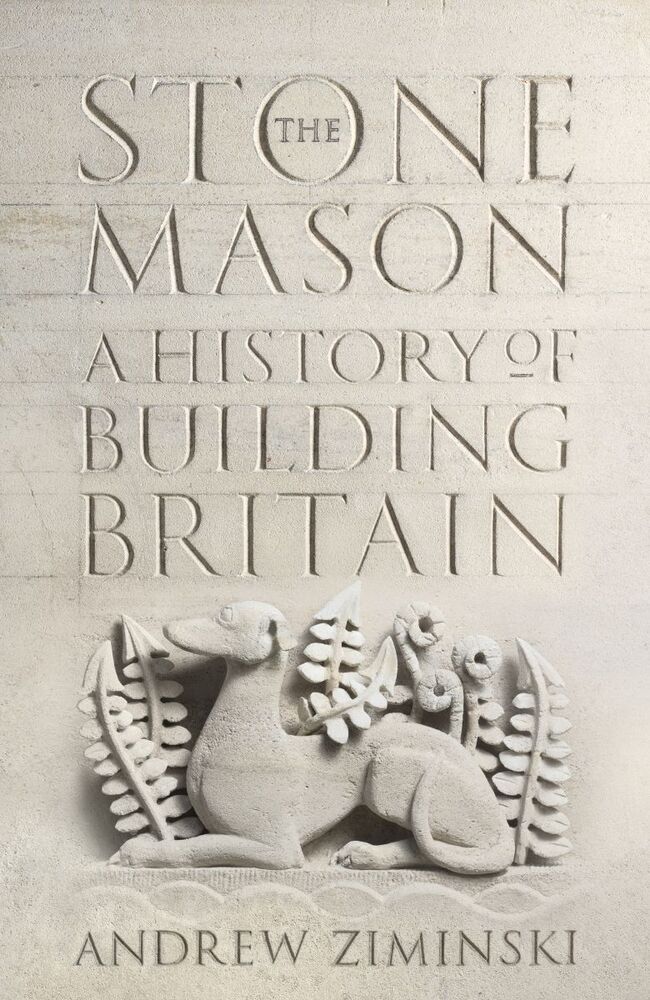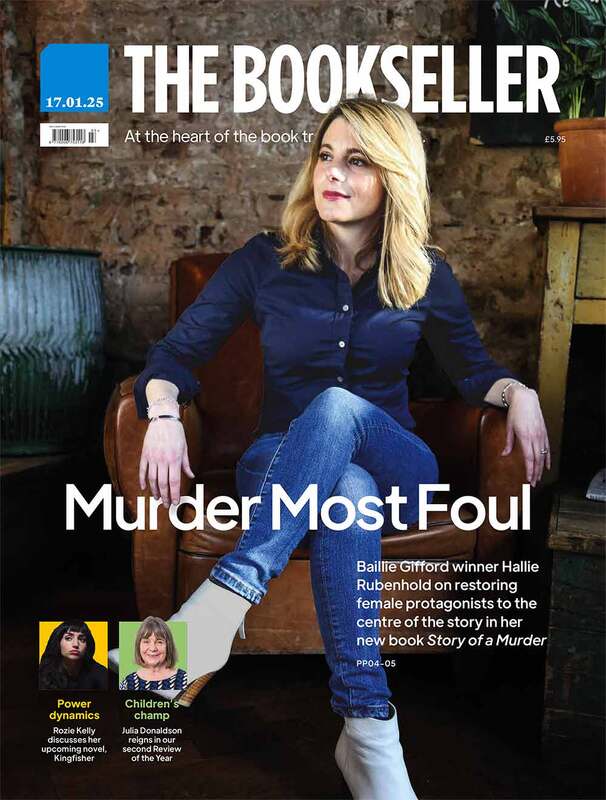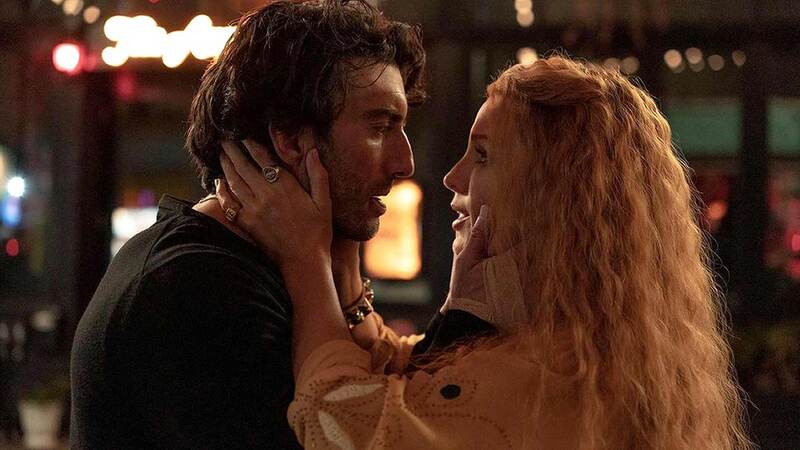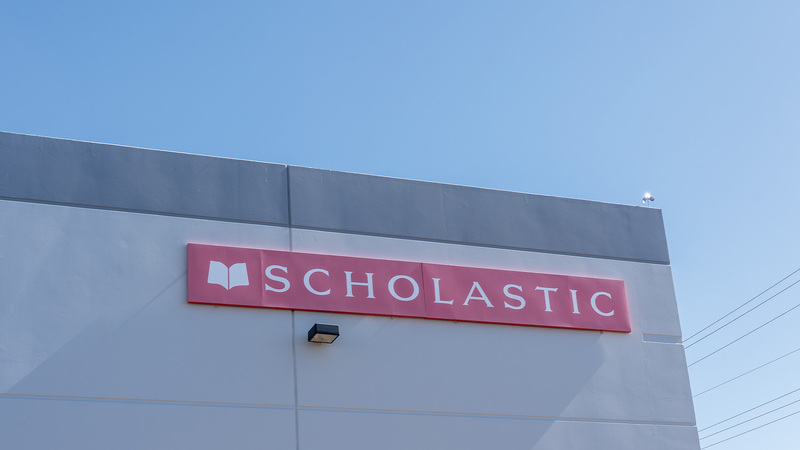You are viewing your 1 free article this month. Login to read more articles.
Andrew Ziminski | 'I really wanted to communicate the fact that our country was built by migrants'
 Caroline Sanderson
Caroline SandersonCaroline Sanderson is a non-fiction writer, editor and books journalist. Her books include a travel narrative, A Rambling Fancy: in the F ...more
Andrew Ziminski’s book on stonemasonry is an enthralling story of the people who helped to shape some of the nation’s most treasured buildings.

Caroline Sanderson is a non-fiction writer, editor and books journalist. Her books include a travel narrative, A Rambling Fancy: in the F ...more
Adjacent to stonemason Andrew Ziminski’s end-of-terrace stone cottage is the parcel of land where he has his open-air workshop. As he stands at his outdoor workbench, he can survey the stone crosses high up on neighbouring Trinity Church that he himself repaired. They are just the nearest example of his stone conservation work, which can be found across the south-west of England and beyond. When I visit, he bravely lets me do a little stone-carving of my own. With a mallet and a little claw chisel, I chip away in a curve to help emphasise the sinuous outline of a reclining woman. It’s a design in Bath stone Ziminski is working on for a famous client he asks me not to name.
My short stab at chiselling is but a tiny and tantalising insight into the ancient craft of stonemasonry; its history and practice are described in much greater detail in Ziminski’s forthcoming book, The Stonemason: A History of Building Britain. As well as providing fascinating personal insights into his own 30-year career, he also takes us on an enthralling through-the-ages tour of ancient Wessex by river, road and sea, immersing us in the lives of the long-forgotten ordinary men and yes, a few women too, whose stonemasonry legacy is the survival of buildings we treasure today.
 How did he come to write the book?, I ask back indoors, where we sit with mint tea and homemade biscuits. “It had always struck me that the stonemason’s life is quite interesting, but then I kept thinking: working people don’t write books. Then my parents died and all of sudden, well you start wondering about your own legacy, don’t you? So I said to myself, right let’s get on with this and see what happens.”
How did he come to write the book?, I ask back indoors, where we sit with mint tea and homemade biscuits. “It had always struck me that the stonemason’s life is quite interesting, but then I kept thinking: working people don’t write books. Then my parents died and all of sudden, well you start wondering about your own legacy, don’t you? So I said to myself, right let’s get on with this and see what happens.”
Ziminski, who left school at 16 (“I haven’t even got an O-Level”), had never written anything before, apart from an article for the Society for the Preservation of Ancient Buildings (co-founded in 1877 by William Morris of whom he considers himself a disciple). But he wrote three chapters of his book and invested £700 of a small inheritance on some editorial feedback from Cornerstones Literary Consultancy. “I um-ed and ah-ed about spending the money, and look here I am now, being interviewed by The Bookseller.” From the outset, Ziminski had John Murray in mind. “I’m the biggest fan of Patrick Leigh Fermor’s writing, as well as the work of John Betjeman and Osbert Lancaster. All of them were published by John Murray.” So he was thrilled when the company’s non-fiction publisher, Georgina Laycock, took the book on.
Despite not being academic at school, Ziminski—who grew up in Reigate in Surrey and now lives in Frome, Somerset—was enthralled by history from when he was very young. “I was an only child and a bit of a loner really: I was quite happy kicking my heels, carrying around my Collins Field Guide to Archaeology in Britain and trying to find flint axe-heads. I originally wanted to be an archaeologist but with no qualifications it was a bit difficult, even though I helped out on a lot of digs as a volunteer.” Then, the chance to work on the piece-by-piece dismantling of an old brewer’s house he passed each day as a child, and then on its reconstruction at the Weald and Downland Museum near Chichester in Sussex, sparked his vocation. “‘Mick the Mason’, who took me under his wing, told me of a working life that sounded like a Thomas Hardy plotline,” writes Ziminski in his introduction to the book. A stonemasonry course followed at South Dorset Technical College in Weymouth, where Ziminski met both his wife, Clare, and his long-time business partner, Andrew Sharland.
Treasured moments
Thirty years on and his CV includes conservation work on some of our most treasured monuments and buildings including West Kennet Long Barrow, Avebury, the spire of Salisbury Cathedral, Malmsbury Abbey and the dome of St Paul’s in London. His journeyman’s tales of working at such sites include the story of the thrilling three days he and Sharland spent working alone in the middle of a snowy winter on the so-called Gorgon pediment in the Roman baths complex in Bath. But whether we’re talking about a Unesco World Heritage site like Bath or the kind of “ordinary” rural medieval country church that Ziminski says he most likes to work on, this is history told from the inside out. At various points during our conversation, he leaps up and brings me an object from what he calls his “Zimsonian” home museum to illustrate a point: including a Tudor brick from Canvey Island that is one of his most treasured exhibits. “The brick was fired from clay from the claypits on the island. That big wodge of lime mortar you can see on the top is fired from seashells: I think that’s wonderful.”
And then, with the aid of a more contemporary prop —his MacBook—he shows me a photograph of Stone Number 56 at Stonehenge: one of the two tallest original standing stones on the site that once supported a lintel to create the great central trilithon (the other upright fell down long ago), its adjacent faces worked to a sharply defined angle. This particular sarsen stone fills Ziminski with awe. “Neolithic masons would have pounded away with big round mauls to make those flat planes and that defined edge, and the vast quantities of silica dust they breathed in would have been enough to kill them from the lung disease silicosis, some perhaps within a few months.” Stonehenge is aligned upon the solstitial axis, and at the midwinter point of each year, as it set in the south-west, the sun would have been viewed exactly in the narrow gap between the trilithon, the phenomenon enhanced by the sharpness of the stone edges. “And over 4,000 years later that sarsen stone is still doing its job each winter solstice,” says Ziminski.
Sense of wonder
This kind of wonder at the enduring work of “ordinary” craftspeople is something that Ziminski is particularly keen to coax out of readers of his book, partly he says, as a reaction to the times we’re living in. “I really wanted to communicate the fact that our country was built by migrants: it was the ebb and flow of populations that made Britain. You see it absolutely everywhere, from the window tracery of every single Gothic cathedral which is based on an Islamic design, to the Stonehenge sarsens, which were cut by people from the Low Countries.”
Present throughout our interview is Nutmeg, the author’s whippet, who plays a starring role on the book’s cover in an exquisite Bath stone relief of a dog among ferns which Ziminski carved specially for the purpose. Clare—a decorative sculptor—and daughter Violet have also made their mark on the book, with the former contributing the linocut illustrations themed around doors, openings, portals and porches at the beginning of each chapter, and the latter cutting the “piecrust” lettering for the chapter headings.
The words are finely honed, too. Despite being a novice at the craft of writing, Ziminski was reassured by how similar the process felt to stonemasonry. “Everything comes from the tip of your finger—like it comes from the tip of the chisel. You start with a big idea, just as you start with a block of stone, and then gradually you edit, or reduce it down. It’s the same for any craftsperson really—this desire to create the very best piece of work that you can,” he says.
Book extract
Thirty years ago, strolling down the longest church nave in the country, awed, cowed and a little dishevelled—my clothes rough under a covering of white dust that also sat thick on my boots—I felt like I finally belonged. I had chosen the itinerant path of the journeyman, one I happily still follow today.
In this book, I have tried to plot a roughly chronological journey through the building of Britain from the Neolithic to the present day, and across the year, exploring how our ancestors constructed the world we live in today. I am a stonemason not a historian and have concentrated on the buildings I have worked on and know best. So this is very much a partial and personal history, told from the inside out. I hope you enjoy it.








